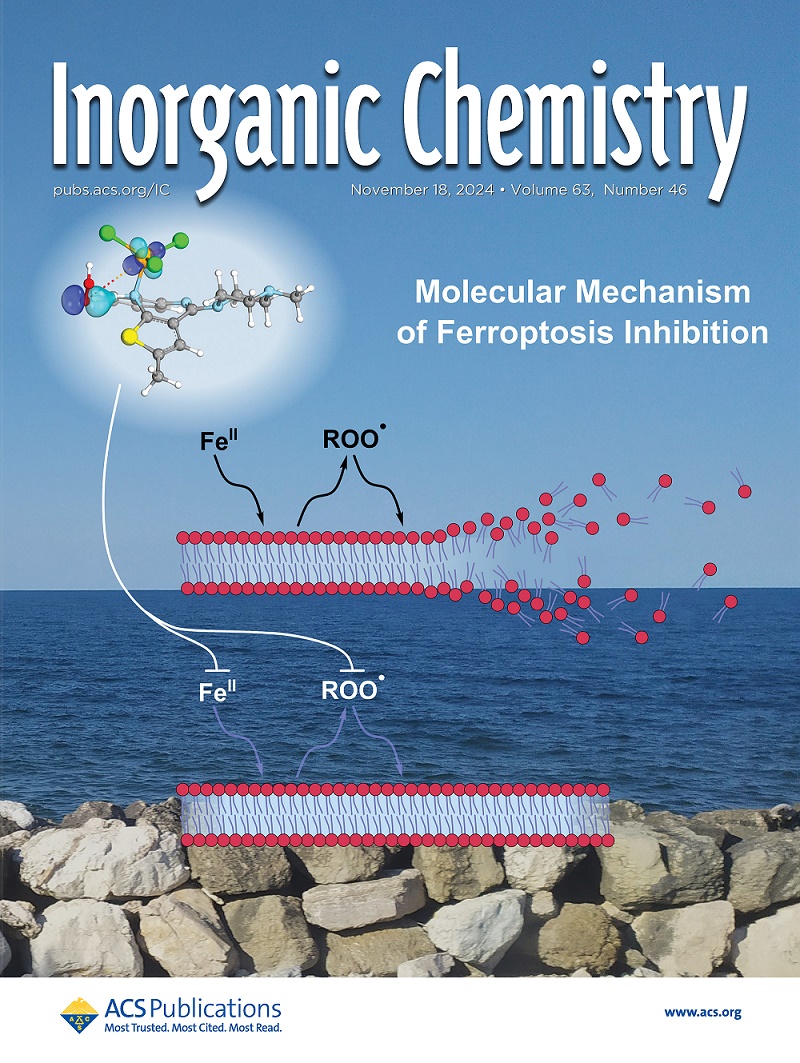Luminescent Iridium-Peptide Nucleic Acid Bioconjugate as Photosensitizer for Singlet Oxygen Production toward a Potential Dual Therapeutic Agent
IF 4.3
2区 化学
Q1 CHEMISTRY, INORGANIC & NUCLEAR
引用次数: 0
Abstract
A novel bioorganometallic PNA conjugate (Ir-PNA) was synthesized by covalently bonding a model PNA tetramer to a luminescent bis-cyclometalated Ir(III) complex that acted as a photosensitizer under light irradiation to generate singlet oxygen (1O2). The conjugate was prepared using an Ir complex bearing the 1,10-phenanthroline ligand functionalized with either a free primary amine (Ir-NH2) or a carboxyl group (Ir-COOH) for the conjugation to PNA. The photophysical studies on the Ir-COOH and the Ir-PNA demonstrated that the luminescent properties were maintained after the conjugation of the Ir fragment to PNA. Furthermore, the abilities to produce 1O2 of Ir-COOH and Ir-PNA were confirmed in a cuvette under visible light irradiation employing 1,5-dihydroxynaphthalene as a reporter, and the measured singlet oxygen quantum yield (ΦΔ) supported the Ir-PNA conjugate efficacy as a photosensitizer (ΦΔ = 0.54). Two-photon absorption microscopy on HeLa cells revealed that Ir-PNA localized in both the cytosol and nucleus, suggesting its potential as an intracellular carrier for PNA. Cytotoxicity assays by MTT tests showed that Ir-PNA was nontoxic in the absence of light, but induced cell death (EC50 = 18 μM) after UV irradiation. Overall, the Ir-PNA conjugate represents a promising system for the intracellular delivery of the PNA and its application in PDT.

求助全文
约1分钟内获得全文
求助全文
来源期刊

Inorganic Chemistry
化学-无机化学与核化学
CiteScore
7.60
自引率
13.00%
发文量
1960
审稿时长
1.9 months
期刊介绍:
Inorganic Chemistry publishes fundamental studies in all phases of inorganic chemistry. Coverage includes experimental and theoretical reports on quantitative studies of structure and thermodynamics, kinetics, mechanisms of inorganic reactions, bioinorganic chemistry, and relevant aspects of organometallic chemistry, solid-state phenomena, and chemical bonding theory. Emphasis is placed on the synthesis, structure, thermodynamics, reactivity, spectroscopy, and bonding properties of significant new and known compounds.
 求助内容:
求助内容: 应助结果提醒方式:
应助结果提醒方式:


